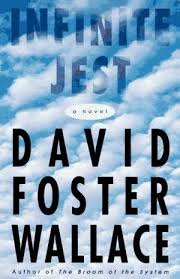(For reference – this is Book 46 of the 90 I’m aiming for this year on my Goodreads Reading Challenge. That is why I start at Book 46, rather than Book 1.)
Earlier this year, I had the pleasure of ready Andy Miller’s ‘A Year of Dangerous Reading’ (second mention of this book already, but he is responsible for at least my next two books that I’ve completed). Like seemingly all humans, I’m pre-disposed to enjoy lists of any sort; as a reader and writer, a list about books is nirvana-esque in nature. These were all books that had Miller had lied to people about reading, both in general and in his previous incarnation as a worker in a bookshop.
I couldn’t have timed reading this book more wrongly if I tried. Miller even warns people that this book shouldn’t be conceived as a list of books people should try and attempt, match or complete; rather, it just a cross section of books he felt like he had to read. In the week I bought this book, I had bought around ten others. Stupidly, I chose to read this first. Before I knew it, I was adding to my collection – every book that he wrote about and enjoyed, I wanted to experience the same feeling as him, so infectious was his delivery. I ended up buying:
‘Under The Volcano’ by Malcolm Lowry
‘Atomised’ by Michel Houellebecq
‘Twenty Thousand Streets Under The Sky’ by Patrick Hamilton
Unlike Miller, I had fair warning that the Hamilton novel was in fact a trilogy, semi-autobiographical in nature, about the patrons of ‘The Midnight Bell’, a pub in London. I’ve since read ‘The Siege of Pleasure’, the second book in the trilogy, but that won’t be touched upon here – it is more likely to feature along with the concluding part, ‘The Plains of Cement’.
I’m not going to pretend and act as if I am able to critically analyse every aspect of a novel I read. I could try and wax lyrical about the juxtaposition of characters, the use of the pronoun and the cyclical structure of a narrative, but that doesn’t necessarily evoke the way I read and understands books. I often feel like the pupils in my lessons; I often know that I like a book, but can’t often always pinpoint why outside of ‘…because it was good’. You are unlikely to meet New York Review of Books level evaluation here; what I do hope you get is honest interpretations of books that I have read.
One of the reasons I have so many books is the same reason I feel like I had so used to buy so many CDs: I’m forever looking for the voice that grabs me and carries me away. I found it last with Julian Barnes, though I had similar experiences with authors as diverse as John Williams (‘Stoner’), Junot Diaz (‘This is How You Lose Her’) and Atul Gawande (of a future column’s fame); diverse at least in terms of time period, themes explored, ethnicity, if not gender (something I’m working on).
Hamilton grabbed me and truly didn’t let me go.
This power admittedly waned on the second book (my one reference to it), but inside the head of Bob, one of the workers at the Midnight Bell, as he begins to embark on a dizzying relationship with a flighty ‘lady of the night’ called Jennie, the story roars along apace. It is written in the third person, but Bob is the main character, and it is his internal struggle as he is constantly let down by this lady with which he has delusions of a future that forms the backbone of the story.
I don’t really want to give spoilers for books – books are probably the most obvious medium that can’t survive the pre-emptive reveal of the twist or the ending, due to the amount of time and effort that needs to be put into it as an entertainment form. Therefore, I’m not going to take you through the narrative step by step. If it sounds good to you, buy it – you won’t be disappointed.
Hamilton’s prose style is what I would describe as ‘no wasted motion’. Everything is clear, precise and to the point, though rather than make it feel monotonous or cold, this gives it a much more lyrical air than might be expected. There’s a snap to the altercations between the oddities and the staff at The Midnight Bell, a fizz as Bob tries to reconcile his true feelings for Jennie. Almost bi-polar in nature, I’ve not personally read a better evocation of the first stages of love (or at least, love that perhaps isn’t meant to be) than you see in The Midnight Bell. With limited time wasted, Hamilton is also able to create a real sense of time and place through his use of description; we feel part of this slightly grimy local pub, connected to its cast of misfits and characters.
Without wanting to be too technical about a feature of style, I also really enjoy the use of capital letters for both concrete and abstract nouns in the book (something I never thought I’d say). It is used by both Bob and Jennie to emphasise key emotions and ideas that are explored in their conversations and thoughts – a simple technique used very effectively. It helps to shape their beliefs in the interaction between single men and women, class, the employment of Jennie, and their burgeoning emotions for each other.
For a book written in the 1920s, it doesn’t feel out of place at all. Hamilton has managed to create an engaging and pithy storyline that still feels fresh and interesting today. Go out of your way to have a look – it is available as part of the trilogy for around £6 on Amazon – and hopefully be swept along by Hamilton’s writing in the same way Bob is by Jennie’s beauty.

